- No products in the cart.
Menu
Start typing to see products you are looking for.
Start typing to see products you are looking for.
Browse Categories
-
PPE Apparel
Masks
-
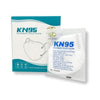 KN95 Respirator Mask, 4 layers, Box of 50 -LP-KN95-001BOX50
$79.00
KN95 Respirator Mask, 4 layers, Box of 50 -LP-KN95-001BOX50
$79.00
-
 Harley N95 NIOSH Certified Particulate Respirator Mask, Folder Style 20/Box - L-188
$36.00
Harley N95 NIOSH Certified Particulate Respirator Mask, Folder Style 20/Box - L-188
$36.00
-
 Lab Pro Mask KN95 (K-N95) Pack of 50 - LP-MASK2-K95 - 40% OFF
Lab Pro Mask KN95 (K-N95) Pack of 50 - LP-MASK2-K95 - 40% OFF
$125.00$75.00 -
 Lab Pro 3ply Earloop Disposable Mask (Non-Surgical) (Box of 50) - 84% OFF
Lab Pro 3ply Earloop Disposable Mask (Non-Surgical) (Box of 50) - 84% OFF
$57.00$9.00
-
-
Chemicals
-
Wipes
-
Microscopes and Lighting
-
Hand Tools
Hand Tools
-
Gloves
-
Swabs and Applicators
Foam Tipped Swabs
-
ESD & Static Control
ESD & Static Control
-
Lab Equipment
-
Pipettes
-
Furnaces and Ovens
Furnaces and ovens
-
All Products
- Services New
-
Industries Served
- Brands
- Promotions
-
Information
-
Blog
-
All blogs
- Aerospace
- Calibration of Lab Equipment
- Chemicals and Solvents
- Cleanroom and Critical Environment
- Electric Battery Labs
- ESD Safety
- Lab Consumables
- Lab Glassware and Glassware Equipment
- Lab Pro’s Top 5
- Laboratory Equipment
- Laboratory Safety & Lab Efficiency
- Medical Adhesives
- Medical Device Industry
- Microscopes, Lighting & Inspection
- News
- Our Blog
- Pipettes
- PPE and Safety Apparel
- Press Release
- Science Education
- Solar Energy Labs
- Sustainable & Eco-Conscious Lab
- Swabs
- Tweezers and Cutters
- Ultrasonic Cleaning
- VMI for Lab Supplies
-
All blogs
- Contact
Understanding Acetone Uses and Structure: What It Does & When You Need It
- Posted by Ari Pailakian
- Jun 12, 2020
Table Of Contents
Latest Articles
Dec
08
2025
Why Endothermic Reactions Matter In Your Lab Operations
When your laboratory cold pack activates instantly to preserve a temperature-sensitive sample, when your cryogenic process cools reaction mixtures with...
Aug
14
2023
From Lab to Life: The Journey of Electric Battery Development
The evolution of electric battery technology has revolutionized industries and transformed our daily lives. This remarkable journey from laboratory research...
Apr
30
2023
Top 5 Chemistry-Focused Websites of 2023
Chemistry is a fascinating subject with a wide range of applications, from the development of new materials to the synthesis...





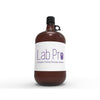
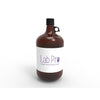








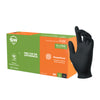


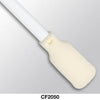












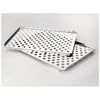






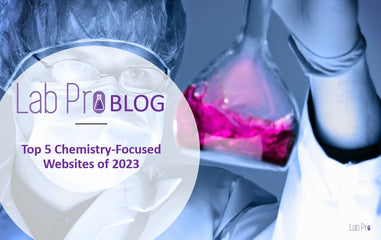
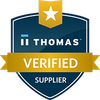




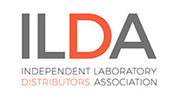
Acetone is a versatile and inexpensive solvent of the ketone family of chemicals which is widely used in chemistry laboratories all over the world. As a result of its favorable safety profile and useful chemical characteristics, laboratories which handle organic chemicals on a regular basis are intimately familiar with acetone. For laboratories which are just getting started with their chemistry work, however, acetone is a critical component of the laboratory inventory which will readily integrate into their workflows.
What is Acetone?
Laboratory personnel who have taken a chemistry class will immediately recognize the faintly sweet and strongly alcoholic smell of acetone fumes wafting from a freshly cleaned set of glassware. Visually, acetone is a clear liquid with a viscosity similar to water. Chemically, acetone is a ketone solvent with the chemical formula (CH 3 ) 2 CO which is most commonly found in its liquid phase when at slightly below room temperature and its vapor phase when at room temperature or above. Jokingly known for its propensity to cause exhausted lab personnel to surreptitiously faint from accidental inhalation of its relatively harmless fumes, acetone is a staple in most laboratories.
As a solvent, acetone excels at dissolving lipids, epoxies, resins, varnishes, oxidation, and even certain instances of light mineralization. Because acetone is miscible in water, it is readily formulated into solutions of varying concentrations depending on the needs of the end-user. This makes acetone a great tool for the laboratory because it can dissolve many of the most common byproducts of chemical reactions which tend to contaminate glassware or cake onto surfaces and become difficult to remove.
Common Laboratory Uses Of Acetone
The most common use of acetone is as a solvent. As a solvent in the laboratory, acetone has a handful of roles, including:
Cleaning glassware and reaction vessels
Dissolving membrane-bound organelles from structures of interest
Precipitating proteins
Removing pigments from chemically-stained biological materials
Conducting heat at very low temperatures while maintaining a liquid phase
Rapidly generating vapor pressure
Among these roles, cleaning glassware is by far the most common application of acetone. Acetone is a ubiquitous choice for rinsing glassware after chemistry work because it readily dissolves byproducts from most common organic reactions while also dissolving glassware contaminants like oils from the skin of lab personnel. What’s more, acetone isn’t expensive or dangerous to use, meaning that lab personnel can use it liberally to clean benchtops and other areas which may have been exposed to chemicals during an experiment or manufacturing process.
Cleaning equipment or benchtops with acetone is as easy as making a solution of 30% acetone and 70% water, squirting the solution onto the target area, and wiping it away with a lab wipe. For laboratories intent on maintaining a semi-sterile environment, another layer of acetone can be squirted onto relevant surfaces and left to air dry to reduce bacterial growth, though the chemical isn’t a sterilizer in its own right.
Acetone is also effective at cleaning sensitive electronic components because it evaporates extremely rapidly. Some laboratories also use acetone as part of the cleaning protocol for their HPLC equipment. However, when used for HPLC cleaning, the purity of the acetone must be extremely high, so it may not always be the most economical choice if there are other options.
Best Practices For Using Acetone
While acetone is an extremely useful chemical in the laboratory, it is also a major source of laboratory mishaps. Acetone is highly flammable, with a flash ignition point below room temperature. This means that laboratory personnel should endeavor to prevent any acetone from being exposed to high temperatures, sparks, or open flames, especially when there is already a high concentration of acetone vapor in the air. In the very likely event that acetone is set alight by a nearby ignition source, it burns quickly and at a relatively low temperature, readily causing minor flash burns to exposed skin and charring adjacent hair during the initial conflagration.
To reinforce the necessity of separating all sources of acetone from fire, heat, or sparks, acetone should always be stored in a container which specifies that acetone is inside and also that acetone is highly flammable. Most labs use squirt bottles which are reserved solely for acetone to address this concern. Doing so guarantees that any personnel who encounter the squirt bottle will know that the contents are somewhat hazardous and prone to ignition.
Acetone also has mildly noxious fumes and can weakly irritate any exposed skin that its liquid phase interacts with. This irritation can be addressed promptly by washing the affected area with soap and water. While acetone is not very dangerous to laboratory personnel in the event of skin exposure, it can be very uncomfortable in the event of ocular exposure, causing intense irritation and redness. Acetone exposure to the eyes can be remedied by brief use of the lab’s emergency eye wash station.
Similarly, while inhalation of intense acetone fumes can cause laboratory personnel to faint or to feel nauseous, these negative effects quickly reside shortly after exposure. Nonetheless, taking the correct precautions when using acetone will prevent any incidents. Laboratory personnel using acetone should take care to avoid anything other than transient inhalation of acetone fumes and also wear nitrile gloves and goggles.
Between the correct protective equipment, the ideal dispensing vessels, and procuring the acetone itself, using acetone in the laboratory requires having the right tools on hand. When labs work with the right acetone supplier, they won’t need to worry about the logistics of storing acetone safely and legally, so they can stay focused on the experimentation or manufacturing activities they prefer. Working with a chemical supplier company that understands the needs of labs using acetone can help to address the acetone supply chain while also ensuring that they never run out of a workhorse solvent.
For over 40 years, Lab Pro has been committed to providing the correct protective equipment, ideal dispensing vessels, and acetone itself, in California. Come visit the biggest Lab Supply showroom in California, or contact us online or at 888-452-2776.